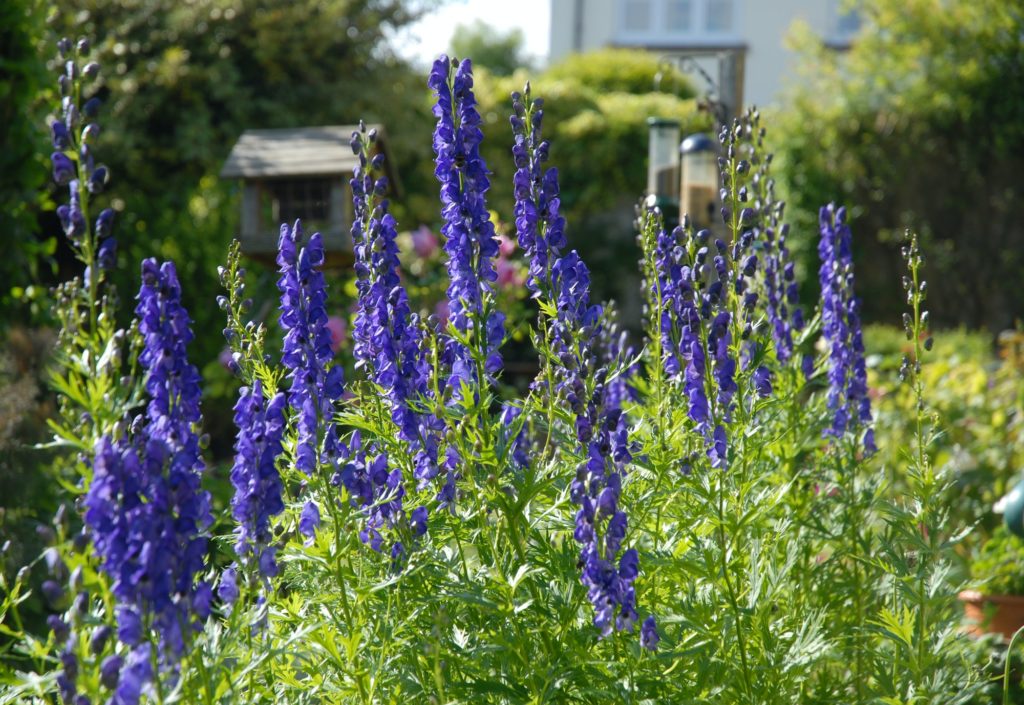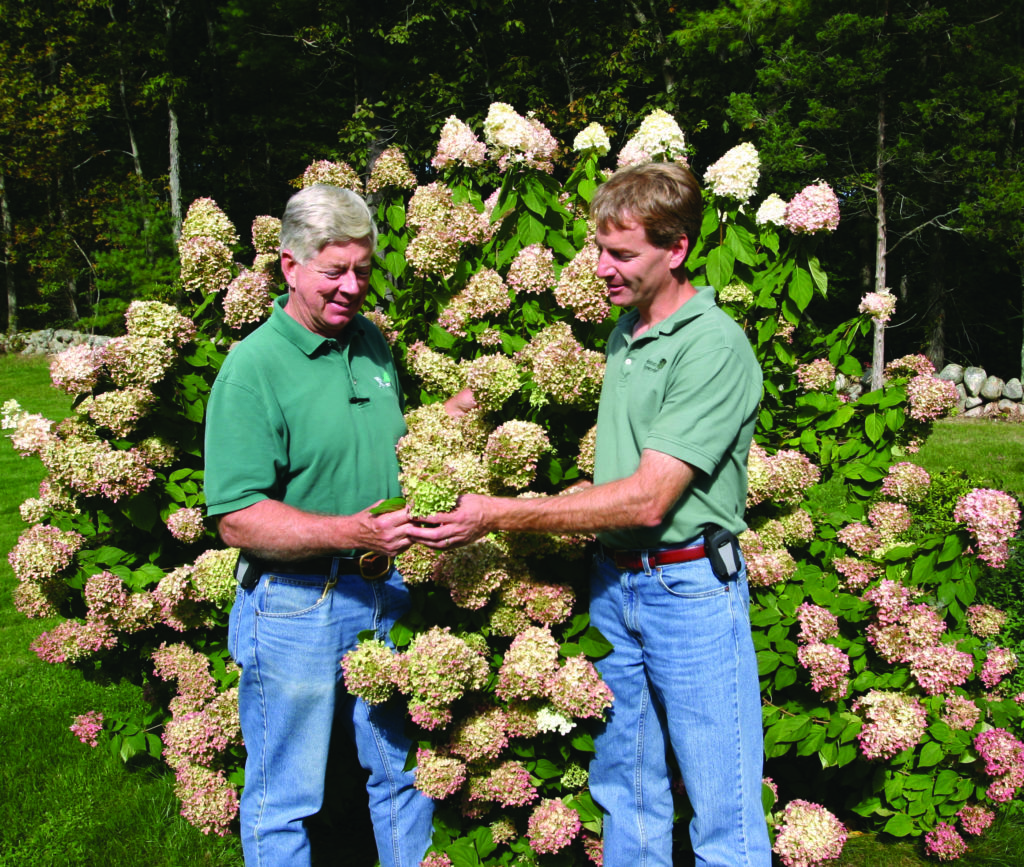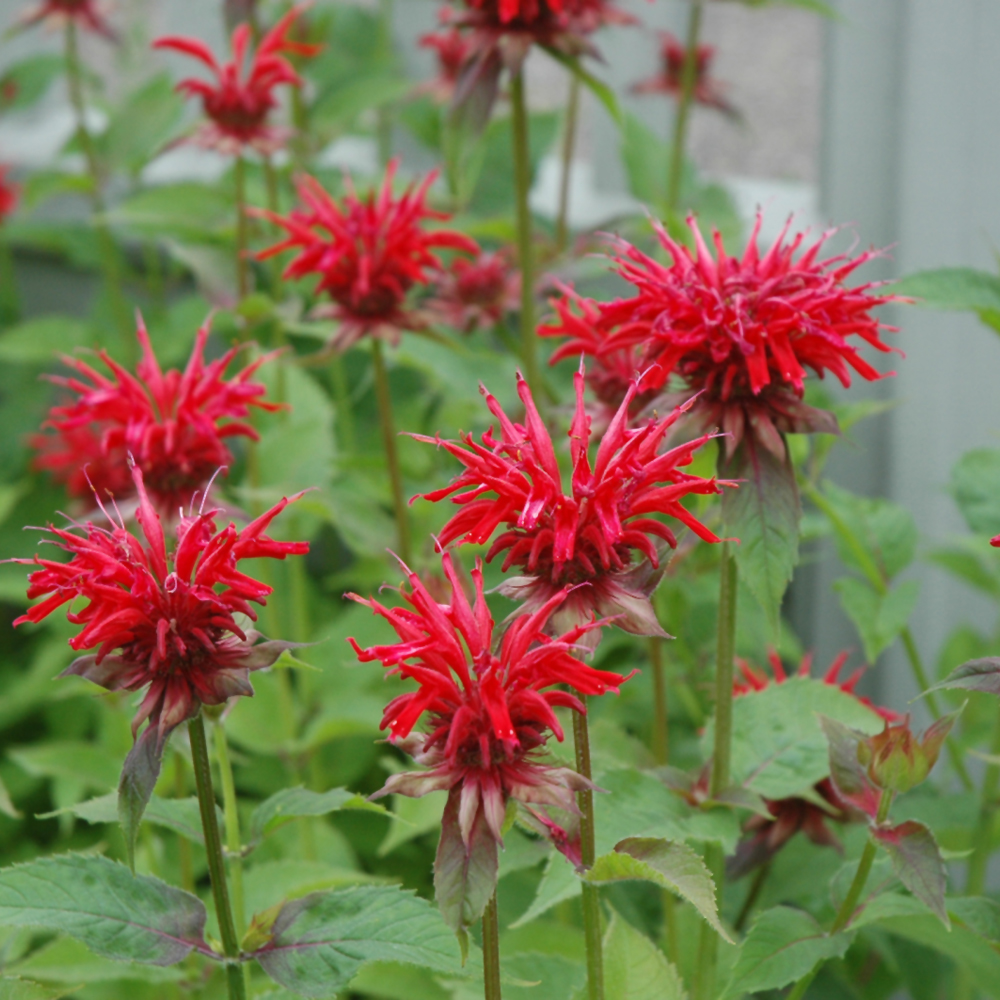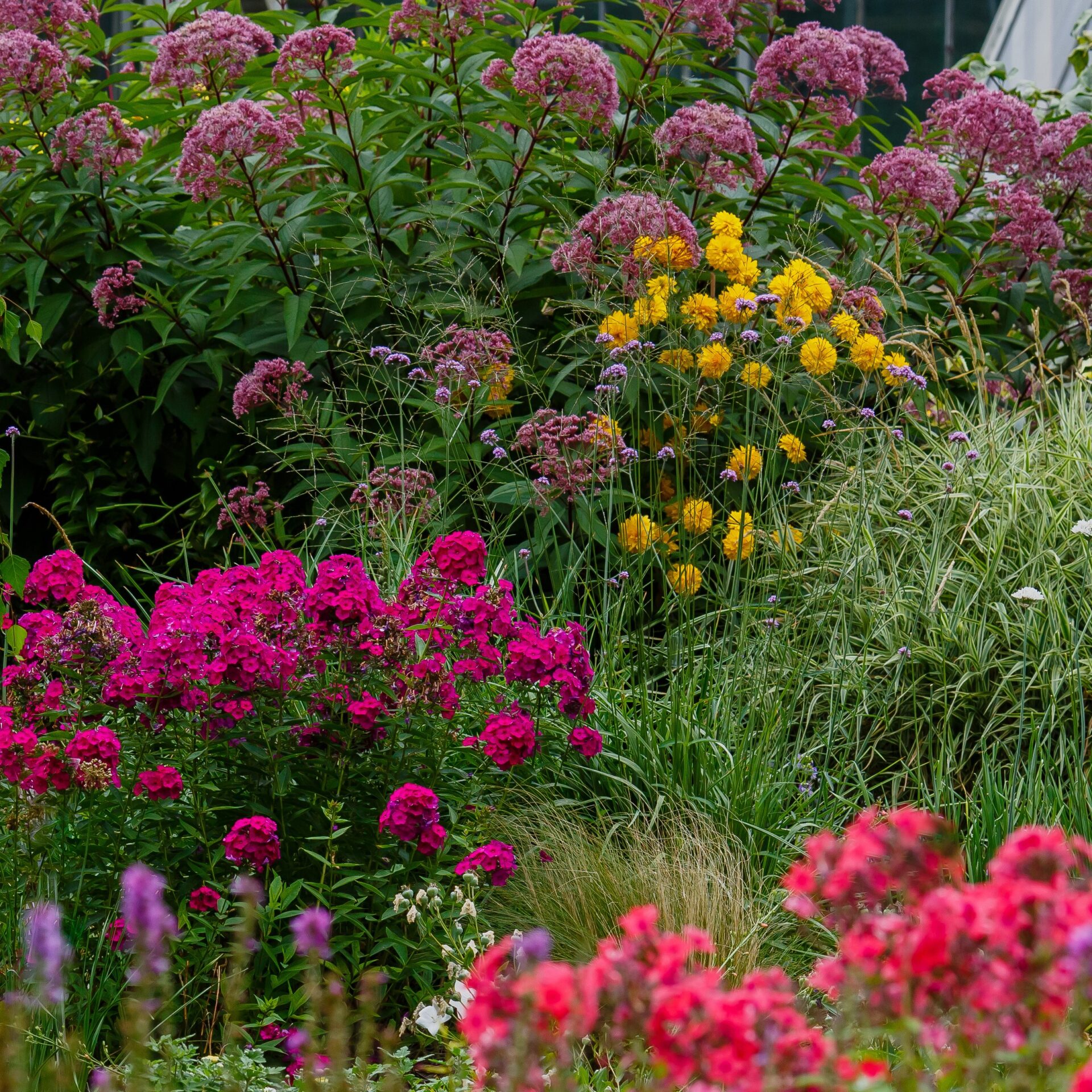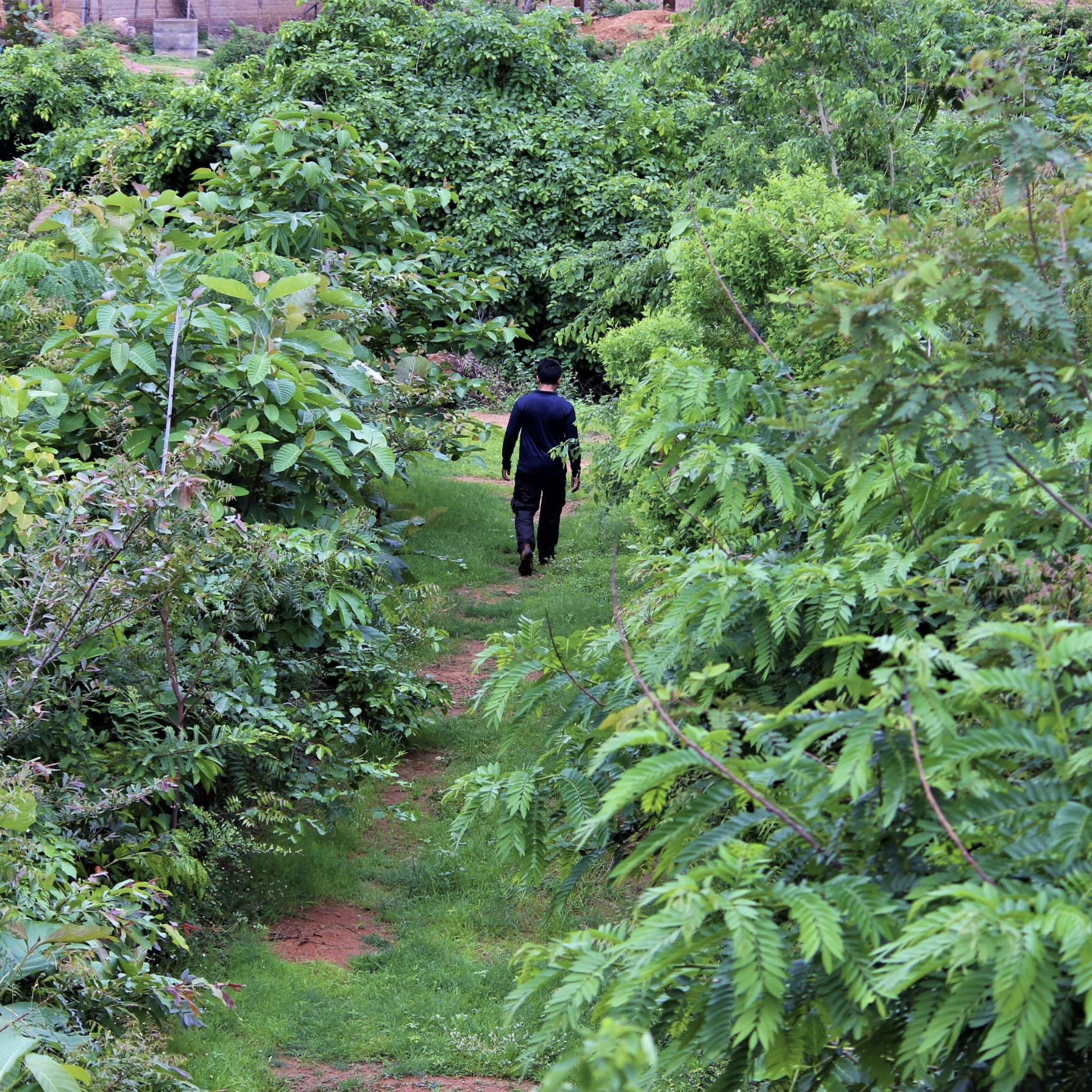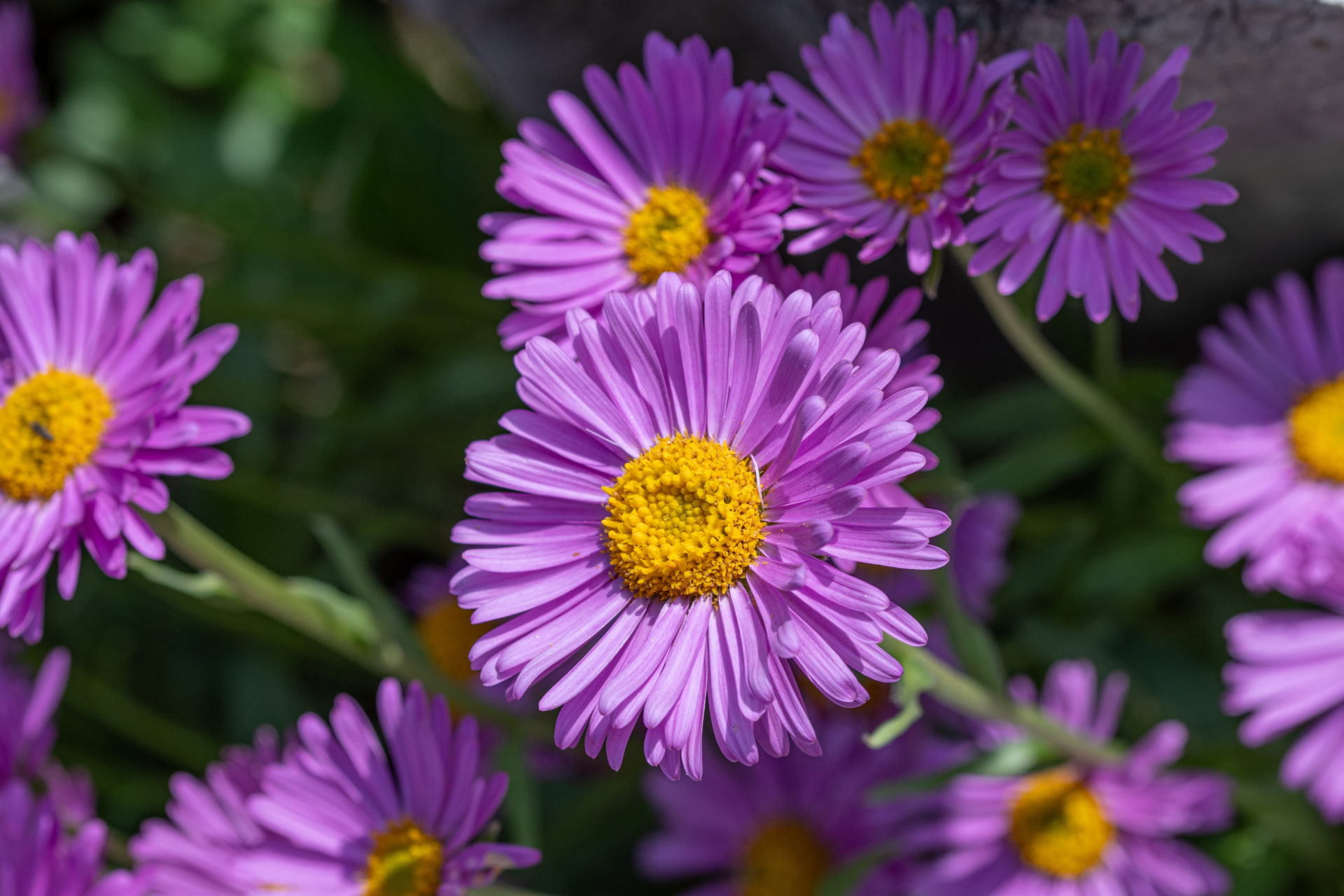
While some plants are winding down in fall, having flowered and set seed, others are just getting into the swing of things. If your garden is in need of a refresh, or you wish to extend the season for pollinators, these are a few of the fall-blooming perennials you could consider.
Asters really herald fall in New England. With their daisy flowers ranging in color from white to pink, and purple to blue, they enhance fall’s color palate, especially when grown alongside perennials such as rudbeckia. At Weston Nurseries the following native species can be found: New England aster (Symphiotrichum novae-angliae), New York aster (S. novi-belgii), white wood aster (Eurybia divaricata), blue wood aster (S. cordifolium), smooth aster (S. laeve), and big leaf aster (E. macrophylla). In addition to the various species, there are also attractive cultivars which expand the versatility of this group of plants particularly if smaller, more compact plants are desired. Native asters are not only diverse in their size, ranging as they do between one and six feet tall, but depending on the aster in question, grow in both sun or shade.
Bugbane (actaea spp.) is a tall, elegant plant for moist, shady conditions. It has lacy foliage, and its current botanical nomenclature is a reference to its foliage being considered similar in appearance to elderberry leaves. A. racemosa is native to north-eastern U.S. and produces tall stems topped with spikes of white flowers, which are pleasantly scented and attractive to pollinators. With an airy, open structure to these flower stems, it is a great plant to use to draw attention to the view behind it, so despite its overall height of around 5-6’, it doesn’t have to be relegated to the back of the border. From the smaller Asian species, A. simplex, come the cultivars with attractive burgundy foliage. Flowers still tend to be white, although the cultivar Pink Spike has dark pink buds which open to reveal pale pink flowers.
Japanese anemone is the common name given to several species of anemone native to China or Nepal, but which have been cultivated extensively in Japan for hundreds of years. These include A. hupehensis, A. tomentosa, and A. vitifolia, along with the hybrid A. x hybrida. They have cup-shaped flowers which come in white or shades of pink and purple, and these colors contrast pleasingly with the ring of bright yellow stamens in the middle of each flower. These anemones and their cultivars offer a long bloom season, and range in height from 2-3 feet tall when blooming. Tolerant of light shade, they do best in soil that does not dry out.
Russian Sage (Perovskia atriplicifolia/Salvia yangii) is an aromatic plant with silvery foliage, and lavender blue flowers which are popular with bees. This sun-loving, drought-tolerant plant is native to central Asia, and blooms from late summer through fall, bringing a delicate airiness to borders. While the species grows 3-4’ tall, there are cultivars that are smaller, such as Blue Jean Baby, Denim N Lace and Little Spire. Russian sage is a sub-shrub, which means it develops woody stems at its base and does not die back to just a crown in winter. To maintain neat and vigorous growth, it should be cut back to near its base each spring.
Toad Lilies (Tricyrtis spp.) are uncommon plants for moist, shady conditions. Their speckled flowers resemble orchids, and like orchids they have a long blooming period. Native to woodlands in eastern Asia these adaptable shade-lovers perform equally well in New England gardens. While their flowers are not large, their beauty and the fact that they are carried on tall stems mean they do not go unnoticed. These are clump forming plants, which will slowly spread by rhizomes.
Switch Grass (Panicum virgatum) is one of several grasses I could mention in this article, but space restricts me to just one, so on this occasion, I have chosen a tall, native grass that also has attractive cultivars. Found throughout most of continental U.S.A., particularly on the plains, it grows between 3-6’ tall and has airy flower spikes, which along with the foliage will turn straw-colored in winter. Here in Massachusetts it is common to see it along roadside verges. Cultivars tend to enhance the color of the foliage, so Dallas Blues, Northwind and Heavy Metal are distinctly blue-gray, while Shenandoah and Ruby Slippers have burgundy flecked leaves, which become more pronounced in fall.
And lastly, to bring this article full circle so to speak, the last perennial to be mentioned is also iconic of fall: chrysanthemum. It is not the plant that is sold in abundance at this time of year as a staple of fall decor – that is also a perennial, chrysanthemum x morifolium, but is challenging to get through New England winters. These chrysanthemums are the similar Korean mums, which were initially hybridized in Connecticut during the 1930s to provide greater cold tolerance. Look for varieties such as Sheffield, Clara Curtis, and Mei Kyo, which offer those familiar daisy-like flowers in a more relaxed and naturalistic form.

